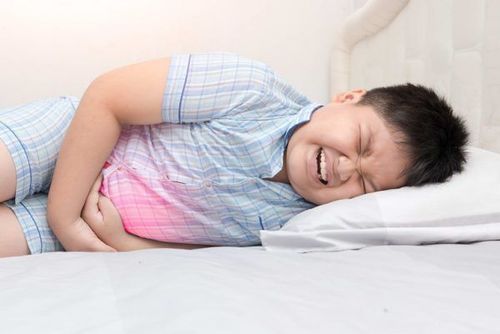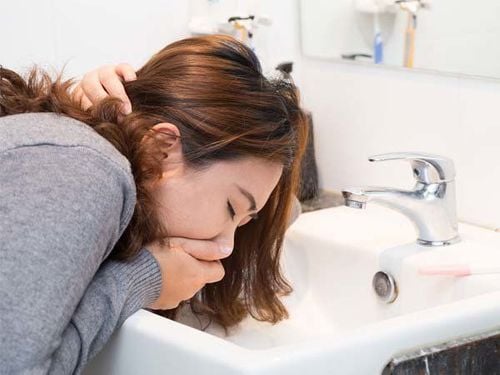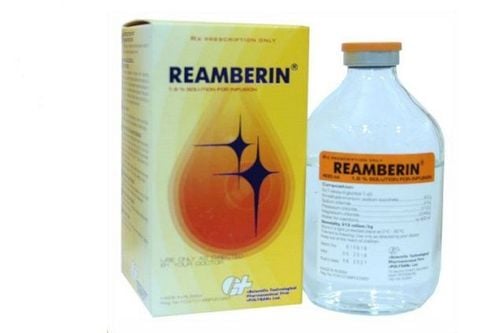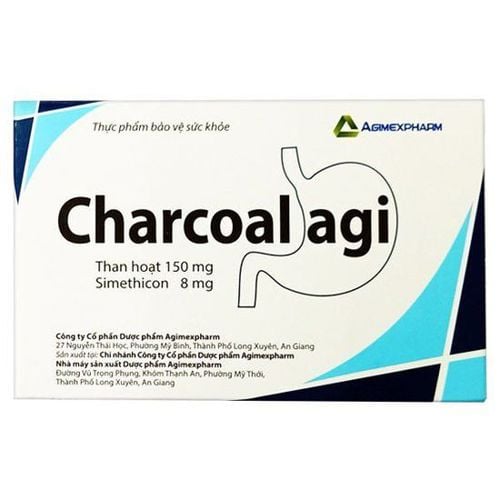This is an automatically translated article.
The article was professionally consulted with Specialist Doctor I Nguyen Huu Nam - Pediatrician - Neonatologist - Department of Pediatrics - Neonatology - Vinmec Nha Trang International General Hospital.Chemical poisoning in children is a very common condition. The main reason is due to curiosity and often eat things that children get. Therefore, each family member needs to know how to handle acute poisoning in children to promptly handle the situation. Good initial management is very important to the success of subsequent treatment stages.
1. Diagnosis
Exploiting information about children being poisonedInformation about the patient's poisoning situation and process can be exploited from relatives or people around. Because the child with poisoning cannot give the information to the medical staff. This information is important in the initial diagnosis. The information you need to know includes:
Poisoning by what substance: can be demonstrated by the bottle, jar, packaging of the poison or according to the statements of relatives. Toxins enter the body by which way: oral, injection, inhalation... How much dose. Initial management was performed for the patient. Time from the start of poisoning to the hospital... Clinical examination for children with chemical poisoning.
The first thing to consider is the child's personal information and health condition before poisoning. Include the following information:
Age, weight. Vitality index: temperature, respiration, blood pressure, nerve, ... The patient is comatose or awake. Convulsions: due to strychnine poisoning, atropine, theophylline, camphor... Miosis: Poisoning by atropine, imipramine, anesthetics, alcohol... Slow pulse: Digitalis poisoning, quinine, muscarin... Tachycardia: Poisoning by atropin, xanthin, theophylline... High fever: Poisoning with xanthine, theophylline... Hypothermia: Barbituric poisoning, phenothiazine... Hyperventilation: Salicylate poisoning (aspirin)... Hemorrhage: Vitamin K antagonist poisoning Subclinical diagnoses of acute poisoning in children . To identify toxicants, it is necessary to conduct tests based on information obtained and clinical symptoms. The test has diagnostic significance, accurately identifying the poison.
The fluids used for testing are the secretions of poisoned children. Includes: vomit, gastric juice, feces, urine, blood. In addition, testing should also be done with suspect items brought in by the family to identify toxins.
The tests that can be performed vary greatly depending on the poison. May do a blood count; urea, blood creatinine; electrolytes; blood sugar; Blood gas; liver enzymes, electrocardiogram...
2. Treatment of acute poisoning in children
Principles of treatment:Treat emergency situations. Identify poisons. Remove toxins. Specific antagonist. Rehabilitation and treatment of complications.

Biết cách xử lý ngộ độc cấp ở trẻ em để tránh những biến chứng nguy hiểm
Respiratory: make sure the baby is breathing well by opening the airway, giving oxygen, intubating, giving respiratory support if needed. Circulatory: emergency cardiac arrest. Rapid infusion of electrolytes, colloidal solutions, or blood as directed when the patient shows signs of shock. Absolutely do not use vasopressor drugs immediately without infusion of enough fluids. Neurological: treatment and prevention of convulsions or hypothermia. 2.2 Removal of poisons For toxic substances through the skin and mucous membranes: clean the body with water or a suitable solvent. Children poisoned with toxic substances through inhalation: take the patient to a well-ventilated area. With gastrointestinal toxins: the mechanism of elimination of toxins depends on time and poison. Induce vomiting:
Apply to poisons that are food, leaves, pills, drinks. This method is done with children who are still awake and done within the first hour after the child is poisoned. Ways to induce vomiting include:
Putting finger in throat to induce vomiting. Drink syrup Ipeca 7-10%. Inject morphine. Gastric lavage:
This method is only performed in the first 6 hours after the child has ingested the poison and is still awake. Let the patient lie in a slightly low head position, leaning to one side. Insert the tube into the stomach. Gastric lavage is usually performed with warm water with sodium chloride added or a 0.9% isotonic saline serum solution. When the fluid comes out, it is necessary to observe for cigarette butts, food, blood. Carry out washing until the water removed is no longer cloudy, then stop. After washing the liquid, it should pump activated charcoal into the stomach. Do not induce vomiting or gastric lavage in the following cases: Not applicable to patients who are convulsing and comatose. Children are poisoned with corrosive substances, volatile substances, insoluble oils. Do not wash the stomach when the child is poisoned for more than 6 hours after drinking or eating poison. Activated charcoal:
Activated charcoal is used immediately after gastric lavage and before gastric tube withdrawal. It has the ability to combine with residual toxins to form non-toxic compounds. This compound is not absorbed into the bloodstream and is excreted in the feces. Therefore, it helps to remove all residual toxins after gastric lavage. After the patient washes the stomach, give the patient enough activated charcoal to drink. Mix activated charcoal with water in a ratio of 1:4 into a colloidal mixture and give it to the patient to drink. Dosage is 1g/kg body weight for each dose, up to a maximum of 50g. Use each time 4-6 hours apart. Can be given to the patient directly or pumped into the stomach. However, for poisons that are: alcohol, boric acid, iron, alcan, lithium, acid salts, cyanide, hydrocarbons... then activated carbon has no effect. One point to note is that activated charcoal tablets should not be used because it has little or no effect. Enemas:
To remove toxins remaining in the intestines, people often use magnesium sulfate or paraffin oil. Note that when using bleach, it is necessary to monitor dehydration. For people with kidney failure, do not use bleach containing magnesium. Dosage is as follows:
Magnesium sulfate: 250mg/kg body weight. Paraffin oil 5ml/kg body weight. Tannin:
Tannin has the effect of denaturing some alkaloids and can combine with heavy metal salts. Therefore, it helps to prevent the absorption of these substances into the body. Dosage is about 2-4g for one time use.
Strong diuresis:
Indicated when toxic chemicals are excreted through the kidneys.
Extra-renal dialysis:
Extra-renal dialysis is done in cases of children with severe poisoning with large amounts of toxins. These toxins have the ability to be filtered through the membrane.
Elimination of toxins through inhalation
This method is indicated for poisoning cases of volatile substances (alcohol, benzene, ether, ketone, carbon oxide, xylem...). In addition, in severe poisoning cases, patients may have to undergo dialysis, liver detoxification, plasma exchange... 2.3 Use specific opiate antagonists for Naloxone Organophosphate for Atropin, Pralidoxime Lead for EDTA Methemoglobin for Methylene blue Acetaminophen for N-acetylcysteine Calcium blockers for Calcium chloride Tapioca for Sodium thiosulfate

Trẻ ngộ độc hóa chất là tình huống rất hay xảy ra
The above is information on the management of acute poisoning in children. Hope readers have had useful information to apply to daily life.
With areas near Vinmec Health System hospitals that can immediately transfer patients to Vinmec hospital, the hospital always prepares enough human resources to cope in case of poisoning, to prevent further poisoning.
Vinmec International Hospital's Emergency Resuscitation Department operates 24/24 on all days of the week, including Saturdays and Sundays as well as holidays of the year. With diagnostic imaging equipment and Modern testing, especially specialized heavy-duty ambulances with a full range of supporting machines for severe patients traveling long distances in the subclinical field as well as in transporting serious patients on request. . The team of emergency doctors and nurses at the Emergency - Resuscitation Department of Vinmec International General Hospital are intensively and professionally trained, able to receive and handle urgent cases of patients, and at the same time always has coordinated with all specialties of the Hospital in a methodical and quick manner. At Vinmec Emergency and Resuscitation Department, patients will be examined, diagnosed, quickly and accurately treated and treated according to the priority of emergency until the critical condition is over.
Please dial HOTLINE for more information or register for an appointment HERE. Download MyVinmec app to make appointments faster and to manage your bookings easily.













